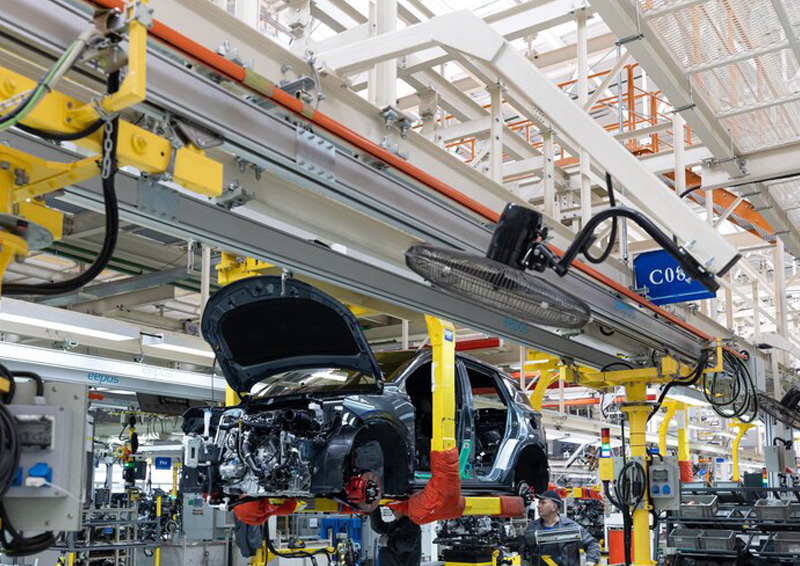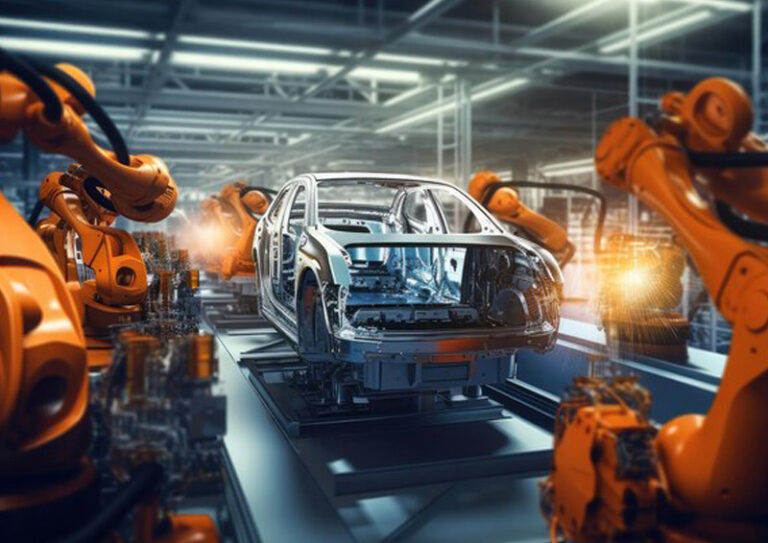The automotive industry stands as a testament to human ingenuity and technological advancement. From the early days of handcrafted vehicles to today’s mass production capabilities, innovation has been the driving force behind its evolution. Central to this evolution is the integration of automation and robotics into manufacturing processes, reshaping how vehicles are built, tested, and serviced. This article explores the profound impact of automation and robotics on automotive manufacturing, tracing its historical roots, examining current trends, and envisioning future possibilities.
Advancements Driving Automation
- The rapid advancements in automation and robotics over the past few decades have been driven by several key technological developments:
- Advanced Robotics: Modern robots in automotive manufacturing are highly sophisticated, equipped with articulated arms, end-effectors, and sensors that enable them to perform complex tasks with precision and efficiency. These robots are designed to handle various materials and components, adapting to different production requirements seamlessly.
- Artificial Intelligence (AI) and Machine Learning: AI plays a crucial role in enhancing the capabilities of robotic systems. AI algorithms enable robots to learn from data, adapt to changes in the production environment, and optimize their performance over time. Machine learning algorithms, for instance, allow robots to improve their accuracy in tasks such as quality control and predictive maintenance.
- Vision Systems: Vision systems integrated with robotic operations provide real-time feedback and enable robots to identify and adjust to variations in parts and assemblies. This capability is particularly critical in tasks like welding and assembly, where precision is paramount to ensure product quality and reliability.
Challenges and Considerations
Despite the transformative benefits of automation and robotics, their adoption in automotive manufacturing is not without challenges: - Initial Investment: The upfront costs of implementing automation technologies, including robotics, can be prohibitive for some manufacturers. This includes not only the cost of purchasing and installing robotic systems but also integrating them into existing production lines.
- Workforce Transition: Automation inevitably changes the nature of work in automotive manufacturing. While robots replace repetitive and physically demanding tasks, they also create new opportunities for skilled workers to operate, program, and maintain robotic systems. However, this shift requires investment in training and reskilling the workforce to ensure they can adapt to new roles.
- Complexity of Integration: Integrating diverse automation systems, including robotics, AI, and IoT (Internet of Things), requires careful planning and expertise. Manufacturers must ensure that these technologies work seamlessly together to maximize efficiency and productivity without disrupting ongoing operations.
Future Trends and Innovations
Looking ahead, several key trends and innovations are shaping the future of automation and robotics in automotive manufacturing: - Collaborative Robotics: The development of collaborative robots, or cobots, is revolutionizing human-robot interaction on the factory floor. Unlike traditional industrial robots, cobots are designed to work alongside human workers safely. This capability enhances flexibility in manufacturing processes, allowing for greater customization and adaptability in vehicle production.
- Internet of Things (IoT) and Big Data: The integration of IoT devices and sensors into manufacturing equipment enables real-time monitoring and data collection. Big data analytics processes this data to optimize production efficiency, predict maintenance needs, and identify opportunities for continuous improvement in manufacturing processes.
- Autonomous Vehicles: The rise of autonomous and electric vehicles is driving demand for advanced robotics in vehicle assembly and testing. Robots equipped with AI and machine learning algorithms play a crucial role in assembling complex components, testing vehicle systems, and ensuring the safety and reliability of autonomous driving technologies.

The Global Landscape of Automation and Robotics in Automotive Manufacturing
Emerging Sectors and Countries
While automation and robotics in automotive manufacturing have long been associated with industrialized nations like the United States, Germany, and Japan, the landscape is rapidly evolving, with new sectors and countries emerging as key players in this technological revolution.
1. Emerging Sectors
a. Electric and Autonomous Vehicles
The shift towards electric and autonomous vehicles is driving significant investment in automation and robotics worldwide. Electric vehicle (EV) production requires advanced manufacturing processes to assemble complex battery systems and integrate electric drivetrains efficiently. Robotics play a crucial role in handling high-voltage components safely and accurately, ensuring the reliability and performance of EVs.
Similarly, the development of autonomous vehicles relies heavily on advanced robotics for sensor integration, testing, and validation. Robotic systems equipped with AI and machine learning algorithms are essential for simulating driving conditions, collecting data for training autonomous systems, and conducting rigorous testing to ensure safety and reliability.
b. Smart Manufacturing and Industry 4.0
The concept of Industry 4.0, characterized by the integration of digital technologies and automation in manufacturing, is reshaping the automotive industry globally. Smart factories equipped with IoT devices, AI-driven analytics, and interconnected robotic systems are optimizing production processes, reducing downtime, and enhancing overall efficiency.

Robots in these smart manufacturing environments are not only performing traditional assembly tasks but also collaborating with each other and human workers in real-time. This collaborative approach increases flexibility, allowing manufacturers to respond rapidly to changes in market demand and customize production runs efficiently.
2. Growing Countries
a. China
China has emerged as a global leader in automotive manufacturing, with a significant emphasis on automation and robotics. The Chinese government’s “Made in China 2025” initiative aims to upgrade the country’s manufacturing capabilities through automation, robotics, and advanced technologies. Chinese automakers and tech companies are heavily investing in robotic systems for assembly lines, painting, and quality control to improve productivity and product quality.
Moreover, China’s rapid expansion in electric vehicle production has spurred investments in automated battery manufacturing facilities. Robotics are crucial in handling and assembling lithium-ion battery cells with precision and safety, supporting the country’s ambitious goals for electric vehicle adoption.
b. South Korea
South Korea is another key player in automotive robotics, driven by its leading automotive manufacturers such as Hyundai and Kia. South Korean companies are investing heavily in robotics and automation technologies to enhance production efficiency, reduce costs, and maintain high product quality standards.
The country’s expertise in robotics extends beyond assembly line operations to include advanced robotics for logistics, maintenance, and even customer service within automotive manufacturing facilities. South Korea’s commitment to innovation and technological advancement continues to propel its automotive industry forward in the global market.
c. Eastern Europe
Eastern European countries, including Poland, Hungary, and Slovakia, have become attractive destinations for automotive manufacturing due to their skilled labor force, favorable business environment, and strategic location within the European market. These countries are increasingly adopting automation and robotics to remain competitive in automotive production.
Robotic systems in Eastern Europe are employed not only in traditional manufacturing tasks but also in collaborative applications that enhance worker safety and efficiency. Investments in Industry 4.0 technologies are transforming regional economies and positioning Eastern Europe as a hub for advanced automotive manufacturing capabilities.
3. Future Prospects
Looking ahead, the growth of automation and robotics in automotive manufacturing is expected to continue, driven by ongoing technological advancements and evolving market demands. Key trends shaping the future include:
AI and Machine Learning: Further integration of AI and machine learning algorithms will enhance the cognitive capabilities of robotic systems, enabling adaptive and predictive behaviors in manufacturing processes.
Sustainable Manufacturing: Automation will play a crucial role in advancing sustainable manufacturing practices, such as recycling materials, reducing energy consumption, and minimizing environmental impact throughout the automotive supply chain.
Global Collaboration: Collaboration between countries and multinational companies will accelerate the adoption of standardized robotic systems and best practices across different regions, fostering innovation and competitiveness in the global automotive market.
The global landscape of automation and robotics in automotive manufacturing is dynamic and multifaceted, encompassing emerging sectors and countries that are driving technological innovation and reshaping industry standards. As automation continues to evolve, manufacturers worldwide are leveraging robotic systems to enhance productivity, quality, and sustainability in vehicle production.
By embracing advanced technologies and fostering global collaboration, the automotive industry is poised to achieve new heights in efficiency, innovation, and market competitiveness. As a result, automation and robotics will remain integral to the future of automotive manufacturing, supporting continued growth and advancement in this dynamic sector.



